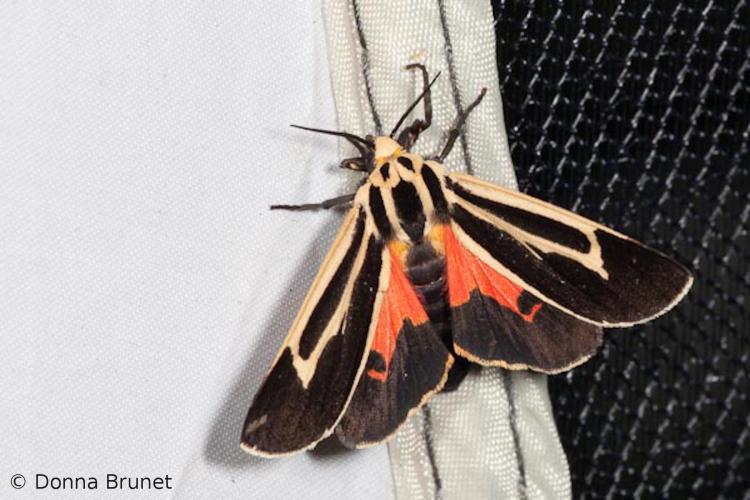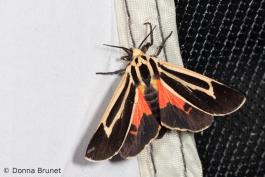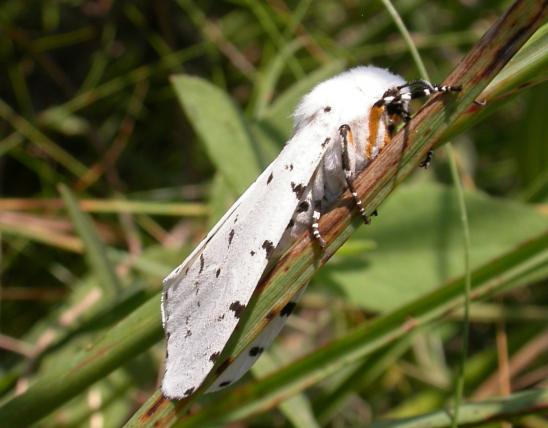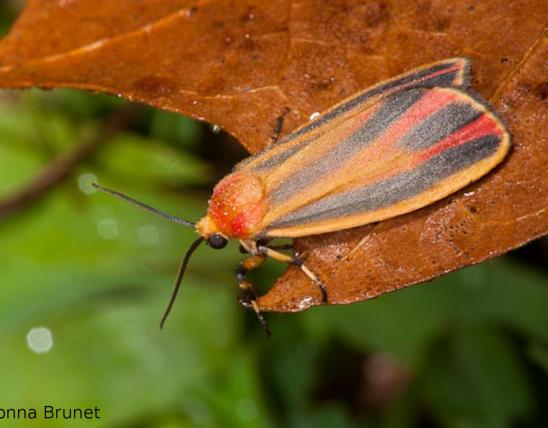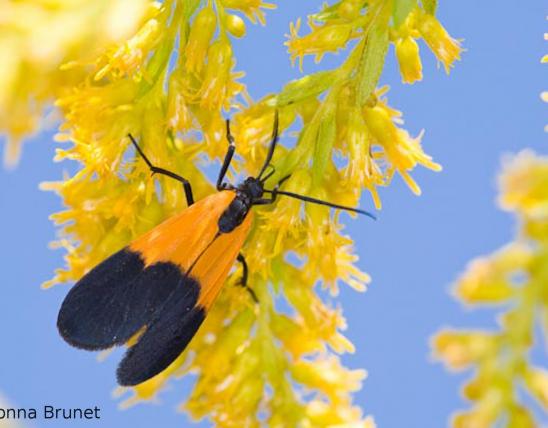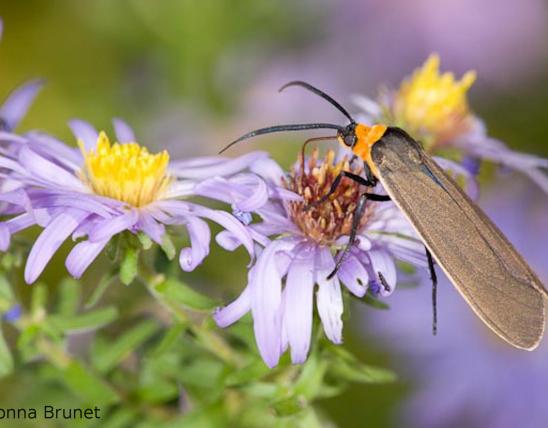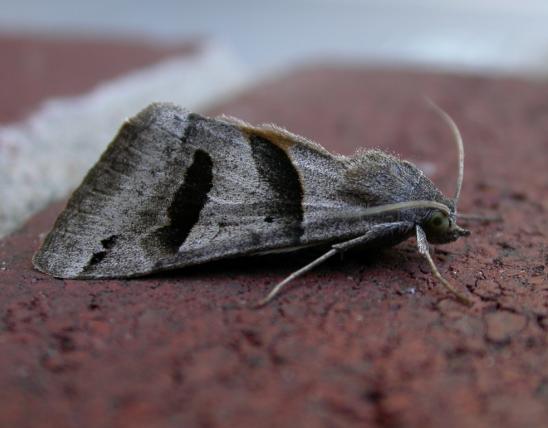
Adult banded tiger moths usually rest with the wings held rooflike over their bodies, or else held flat out to the sides. The forewings are mostly black, with cream-colored markings. The hindwings usually have reddish marking and a broad black border.
The larvae of most tiger moths are usually hairy and are sometimes called “woolly bears.” When disturbed, they commonly roll up in a ball. Be careful when handling, as touching the hairs of some tiger moth caterpillars can cause dermatitis or stinging in some people.
Several similar species of tiger moths live in Missouri. Some can be difficult to tell apart.
Wingspan: 1¼–1¾ inches.

Statewide.
Habitat and Conservation
Tiger moths are often attracted to lights at night. This moth mostly occurs in and around fields and lawns, parks, and disturbed areas, in both rural and urban settings.
Food
Larvae feed on a variety of low-growing herbaceous plants, including dandelions.
Life Cycle
Adults fly from March or early April into October. There are probably two broods in Missouri. Most tiger moths overwinter as full-grown caterpillars or in the pupal stage. Cocoons usually contain caterpillar hairs.
Human Connections
Mottephobia is the fear of moths. Mottephobic people have the same strong panic reaction when confronted with moths as arachnophobic people have about spiders. As with other anxiety disorders, various types of therapy and even medication can help when the phobia is severe.
Ecosystem Connections
The caterpillars are herbivores that graze on vegetation. The bright colors of tiger moths usually announce the presence of inedible chemicals in their bodies. Other tiger moths, that are edible, gain protection via similar color patterns.
